24 December. Day of the capture of the Turkish fortress Ishmael
In 1787, Turkey, supported by England and France, demanded that Russia revise the treaty: return of the Crimea and the Caucasus, invalidation of subsequent agreements. Having been refused, she began hostilities. Turkey planned to capture Kinburn and Kherson, land a large landing in the Crimea and defeat the Russian base fleet Sevastopol To launch military operations on the Black Sea coast of the Caucasus and Kuban, significant Turkish forces were sent to Sukhum and Anapa. To ensure its plans, Turkey prepared a 200-strong army and a strong fleet of 19 battleships, 16 frigates, 5 bombardier corvettes and a large number of support ships.
Russia deployed two armies: Yekaterinoslav General Field Marshal Grigory Potemkin (82 thousand) and Ukrainian General Field Marshal Peter Rumyantsev (37 thousand). Two strong military corps isolated from the Yekaterinoslav army were in the Kuban and in the Crimea.
The Russian Black Sea Fleet was based in two points: the main forces were in Sevastopol (23 warship with 864 guns) under the command of Admiral M.I. Voinovich, the future great naval commander Fedor Ushakov served here, and the rowing flotilla in the Dnieper-Bug estuary (20 of light-tonnage ships and vessels, partly not yet armed). On the side of Russia was a large European country - Austria, which sought to expand its holdings at the expense of the Balkan states under Turkish rule.
The action plan of the Allies (Russia and Austria) was offensive in nature. It was to invade Turkey from two sides: the Austrian army had to launch an offensive from the west and capture Hawthyn; The Yekaterinoslav Army was to deploy military operations on the Black Sea coast, capture Ochakovo, then cross the Dnieper, clear the area between the Dniester and Prut from the Turks, and take Bendery for that. The Russian fleet was to be active in the Black Sea to pin down the enemy’s fleet and prevent Turkey from conducting amphibious operations.
Military operations developed successfully for Russia. The capture of Ochakov, the victories of Alexander Suvorov at Focsani and Rymnika created the prerequisites for ending the war and signing a world advantageous for Russia. Turkey did not have the forces at this time to seriously resist the allied armies. However, politicians could not use the favorable moment. Turkey was able to collect new troops, get help from Western countries, and the war dragged on.
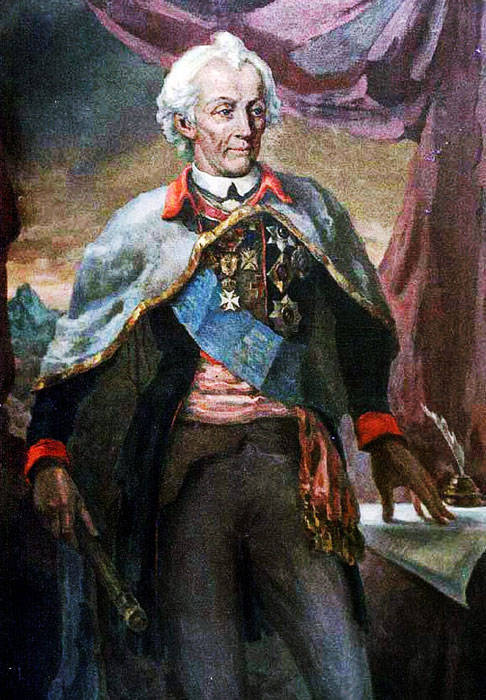
Yu.H. Sadilenko. Portrait A.V. Suvorov
In the 1790 campaign, the Russian command planned to take the Turkish fortress on the left bank of the Danube, and then move the military action over the Danube.
During this period, brilliant successes were won by Russian sailors under the command of Fyodor Ushakov. The Turkish fleet suffered major defeats in the Kerch Strait and off Tendra Island. The Russian fleet captured lasting supremacy on the Black Sea, providing conditions for active offensive actions of the Russian army and rowing fleet on the Danube. Soon, having mastered the fortresses of Kiliya, Tulcha and Isakcha, the Russian troops approached Ishmael.
The fortress of Ishmael was considered impregnable. Before the war, it was rebuilt under the leadership of French and German engineers, who greatly strengthened its fortifications. On three sides (northern, western and eastern), the fortress was surrounded by a shaft 6 km long, up to 8 meters in height with earth and stone bastions. In front of the shaft, a moat was made 12 meters wide and up to 10 meters deep, which in some places was filled with water. On the south side, Ishmael hid behind the Danube. Inside the city there were many stone buildings that could be actively used for defense. Fortress garrison numbered 35 thousand people with 265 fortress guns.
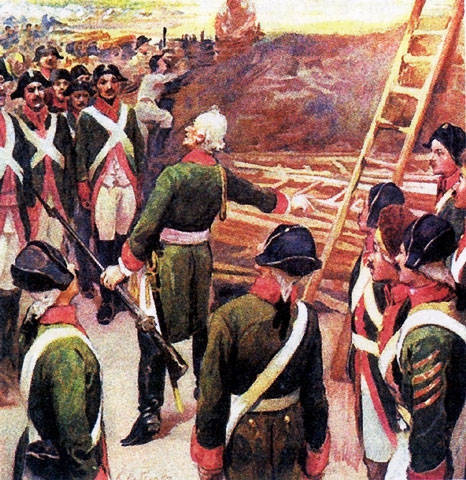
K. Lebezhko. Suvorov teaches soldiers
In November, the Russian army numbering 31 thousand people (including 28,5 thousand infantry and 2,5 thousand cavalry men) with the 500 guns, Ismail laid siege from the land. The river flotilla under the command of General Horace de Ribas, having destroyed almost the entire Turkish river flotilla, blocked the fortress from the Danube.
Two attacks on Ishmael ended in failure and the troops proceeded to a planned siege and shelling of the fortress. With the beginning of the autumn weather in the army, located in an open area, began massive disease. Having lost faith in the possibility of taking Ishmael by storm, the generals who led the siege decided to withdraw the troops to the winter quarters.
On November 25, command of the troops near Izmail was entrusted to Suvorov. Potemkin gave him the right to act at his discretion: "whether by continuing enterprises to Ishmael or by leaving it." In his letter to Alexander Vasilyevich, he noted: “My hope for God and for your courage, hurry my gracious friend ...”.
Arriving at Ishmael 2 December, Suvorov stopped the withdrawal of troops from under the fortress. Assessing the situation, he decided to immediately prepare the assault. Having examined the enemy’s fortifications, he noted in a report to Potemkin that they were “without weak points”.
Preparation for the assault was carried out for nine days. Suvorov sought to maximize the use of the element of surprise, for which he conducted the preparation for the offensive covertly. Special attention was paid to the training of troops for assault operations. At the village of Broska, ramparts and walls similar to those of Izmail were built. For six days and nights, the soldiers worked on them to overcome ditches, ramparts and fortress walls. Suvorov encouraged the soldiers with the words: “More sweat - less blood!” Simultaneously, to deceive the enemy, preparation for a long siege was simulated, batteries were laid, fortification works were carried out.
Suvorov took the time to develop special instructions for officers and soldiers, which contained the rules of engagement during the storming of the fortress. On the Trubaevsky Kurgan, where a small obelisk stands today, there was a commander’s tent. It was a painstaking preparation for the assault, it was thought out and provided for all the details. “At such an assault,” Alexander Vasilyevich later admitted, “one could venture only once in one's life.”
Before the battle at the military council, Suvorov declared: “The Russians stood twice before Ishmael and twice retreated from him; now, for the third time, they have nothing left to do but to take a fortress or die ... ” The military council unanimously spoke in support of the great commander.
December 7 Suvorov sent commandant of Ishmael Potemkin a letter with an ultimatum about the surrender of the fortress. The Turks, in the case of voluntary surrender, were guaranteed life, property preservation and the ability to cross the Danube, otherwise "the fate of Ochakov will follow the city." The letter ended with the words: “A brave general, Count Alexander Suvorov-Rymniksky, has been appointed for this execution.” And Suvorov attached his note to the letter: “I arrived here with the troops. 24 thinking time for surrender and will; my first shots - already bondage; the assault is death. ”
The capture of Ishmael. Unknow author
The Turks refused to capitulate and said in response that “soon the Danube would stop during its course and the sky would bow to the ground than Ishmael would surrender.” This response, on the orders of Suvorov, was read out in each company in order to inspire the soldiers before the assault.
The assault was scheduled for December 11. To keep the secret, Suvorov did not give a written order, but confined himself to an oral statement of the task to the commanders. The commander planned to conduct a night simultaneous attack by ground forces and river flotilla from different directions. The main blow was delivered to the least protected riverine part of the fortress. The troops were divided into three groups of three columns each. The column consisted of up to five battalions. Six columns operated from land and three columns - from the Danube.
A detachment under the command of General PS A Potemkin of 7500 men (it included columns of generals of Lviv, Lassi and Meknob) was to attack the western front of the fortress; detachment of General A.N. Samoilov number 12 thousand people (columns of Major General MI Kutuzov and Cossack brigadiers Platov and Orlov) - the north-eastern front of the fortress; a detachment of General de Ribas 9 thousand people (columns of Major-General Arseniev, brigadier Chepegi and second-major Markov's guard) was to attack the river front of the fortress from the Danube. The total reserve of about 2500 people was divided into four groups and is located against each of the gates.
Of the nine columns on the main line was focused six. The main artillery was also located here. A team of 120-150 shooters in the loose ranks and 50 workers with an entrenching tool, then three battalions with fascines and ladders were to move in front of each column. Closes the reserve column built in the square.
F.I. Usypenko. The actions of the Russian artillery during the assault on the fortress of Ishmael in 1790
Preparing the assault, in the morning of December 10, Russian artillery from the land and from the ships fired at the enemy’s fortifications and batteries, which lasted until the attack began. In 5 hours 30 minutes in the morning 11 December, the columns moved to the assault on the fortress. A river flotilla under the cover of naval artillery fire (near 500 guns) landed troops. The besieged met the attacking columns with artillery and rifle fire, and in some areas and counterattacks.
Despite heavy fire and desperate resistance, 1-I and 2-I columns immediately broke into the shaft and captured the bastions. During the battle, General Lvov was seriously wounded and Colonel Zolotukhin took command of the 1 column. 6-I column immediately seized the shaft, but then lingered, reflecting the strong counterattack of the Turks.
3-I was in the most difficult conditions: the depth of the moat and the height of the bastion, which it was to take, turned out to be greater than in other places. The soldiers had to tie stairs under the enemy's fire in order to climb the shaft. Despite the heavy losses, she completed her task.
4-i and 5-i columns, made up of dismounted Cossacks, withstood a heavy battle. They were counterattacked by the Turks who had come out of the fortress, and the Cossacks of Platov had to overcome the moat. The Cossacks not only coped with the task, but also contributed to the successful attack of the 7-th column, which, after landing, was divided into four parts and went into the attack under the flank fire of Turkish batteries. During the battle, Platov had to assume command of the detachment, replacing the seriously wounded General Samoilov. Successfully coped with the tasks and the rest of the column, attacking the enemy from the Danube.
At dawn, the battle was already inside the fortress. By 11 clock the gate was opened and reinforcements entered the fortress. Heavy street fighting continued until dusk. The Turks were desperately defended. The assault columns were forced to separate and act as separate battalions and even companies. Their efforts are constantly increased by the introduction of reserves into battle. To support the attackers, part of the artillery was introduced inside the fortress.
"The fortress of Izmail, so fortified as vast and which seemed invincible to the enemy, was taken as terrible for him weapons Russian bayonets. The stubbornness of the enemy, who haughtily put his hope in the number of troops, was degraded, ”wrote Potemkin in a report to Catherine II.
During the assault, the Turks lost more than 26 thousand people, 9 thousand were captured. The Russians captured around 400 banners and bunchuks, 265 guns, remnants of the river flotilla - the 42 ship, large stocks of ammunition and many other trophies. Russian losses amounted to 4 thousand killed and 6 thousand wounded.
The capture of Ishmael by Russian troops dramatically changed the strategic situation in the war in favor of Russia. Turkey was forced to move to peace negotiations.
In the hall of the Izmail Historical Museum A.V. Suvorov
“There was no stronger fortress, there was no defense more desperate than Izmail’s defense, but Izmail was taken”, - these words from Suvorov’s report to Potemkin are carved on a monument erected in honor of the great Russian commander.
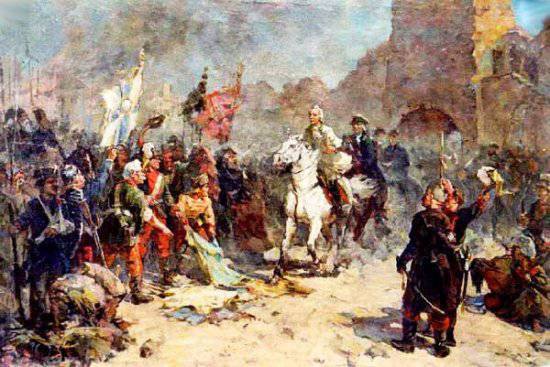
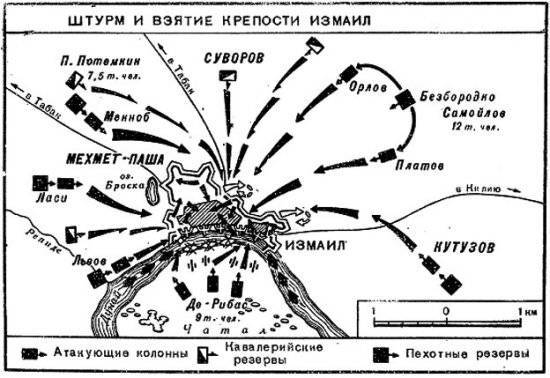
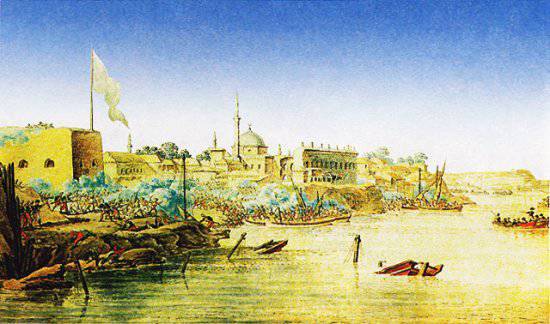
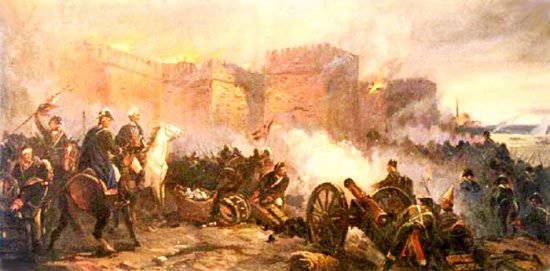
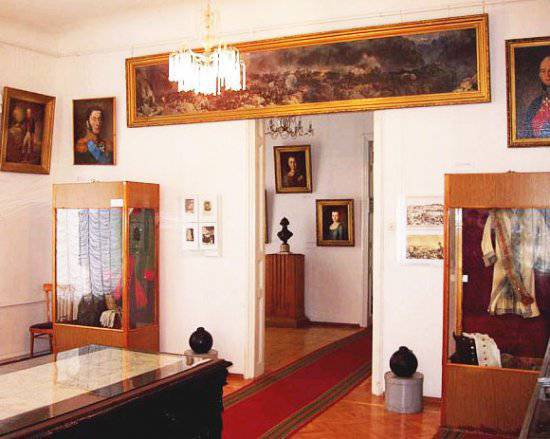
Information